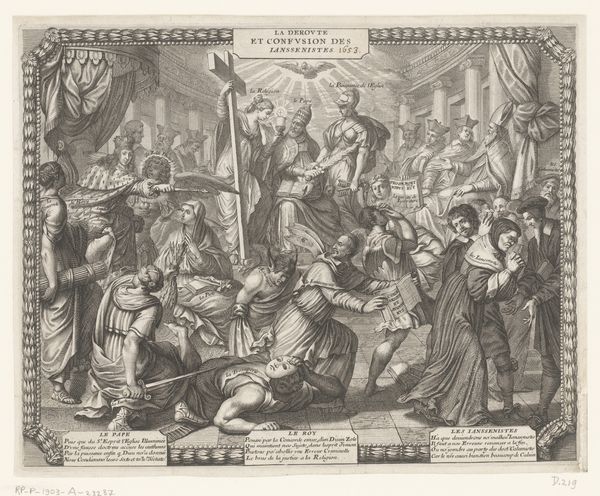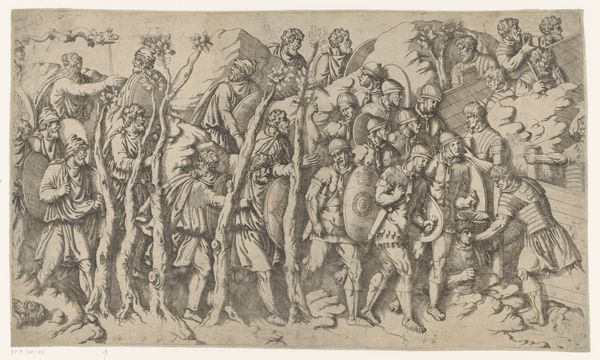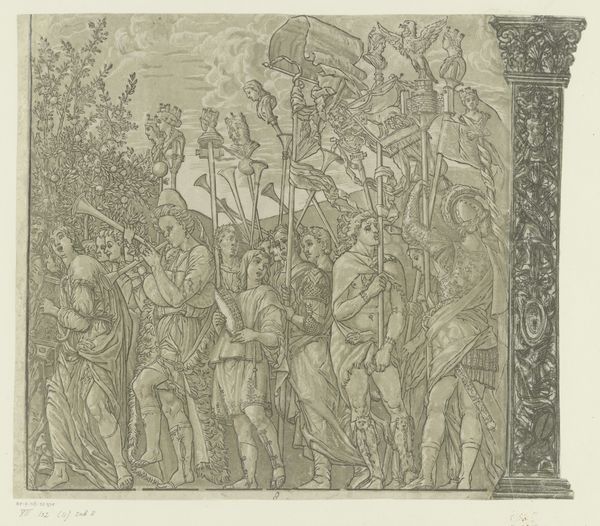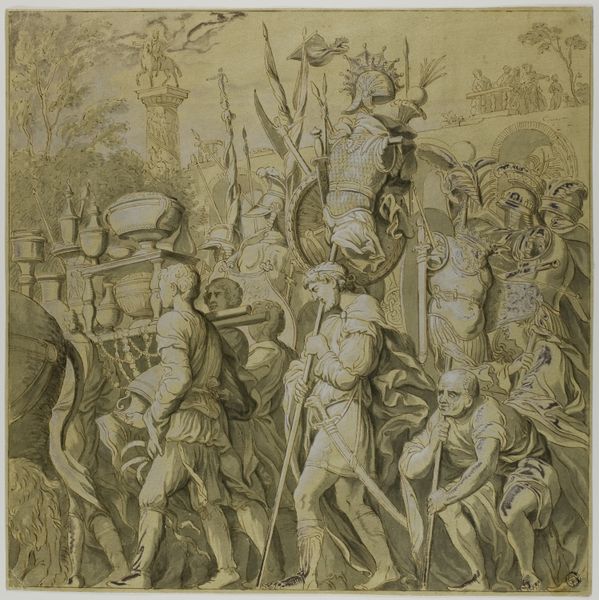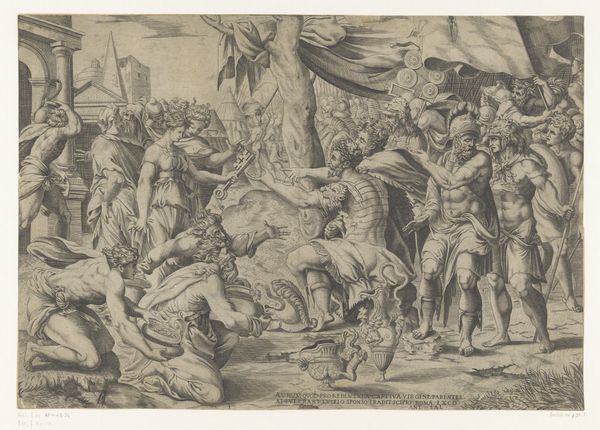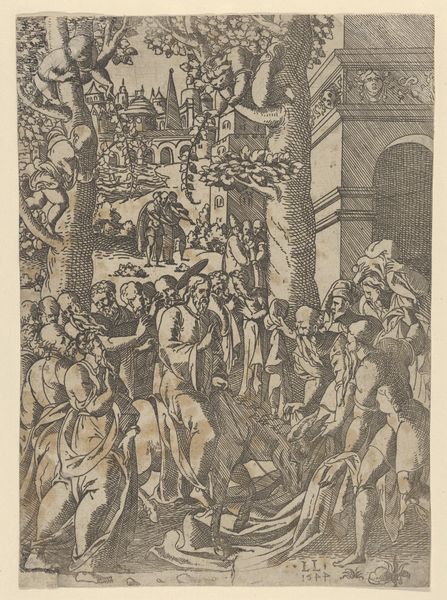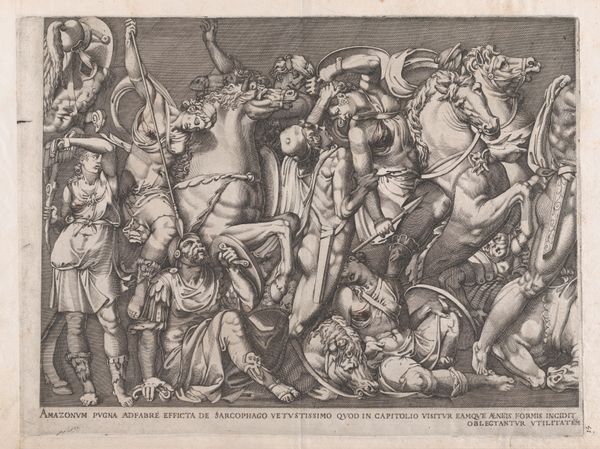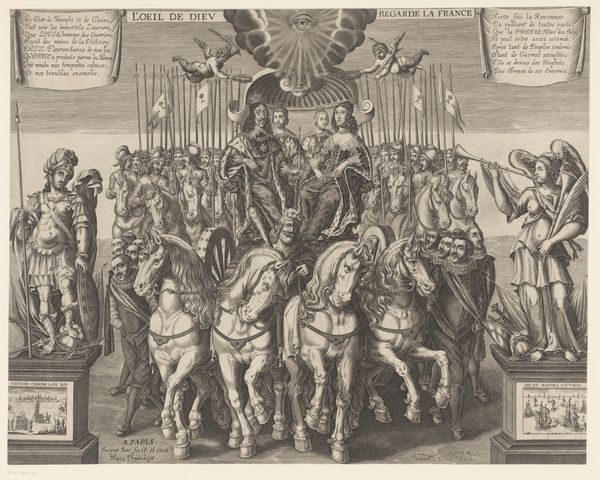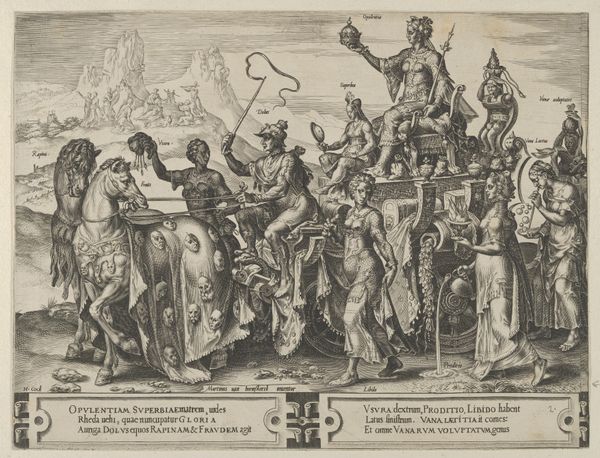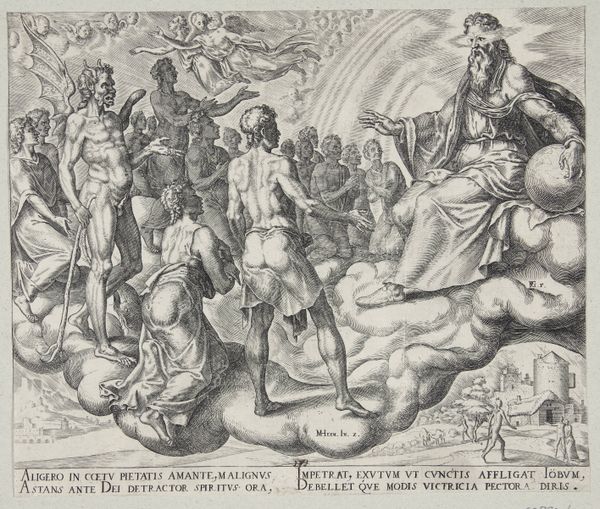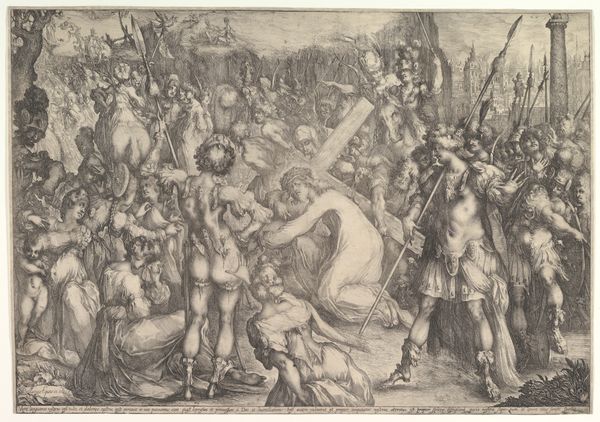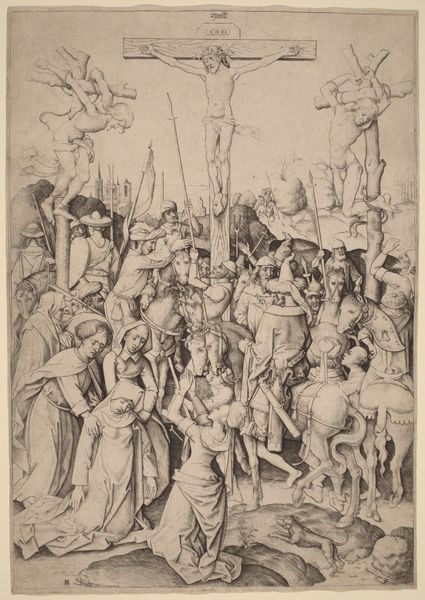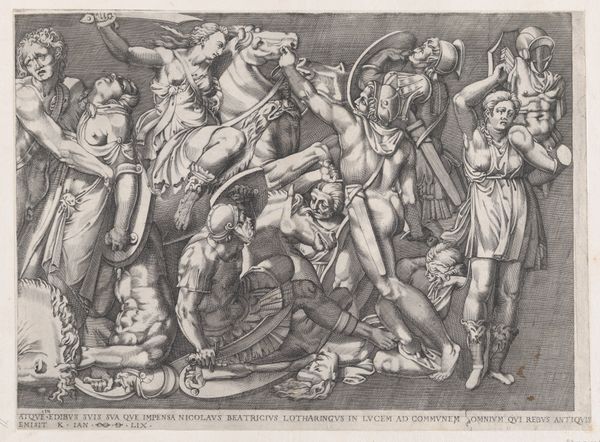
Plate 7: Triumphal Procession after Victory over Turks, from the Triumphs of Charles V 1614
0:00
0:00
drawing, print, engraving
#
drawing
#
baroque
# print
#
landscape
#
figuration
#
group-portraits
#
horse
#
men
#
history-painting
#
engraving
Dimensions: sheet: 12 5/8 x 16 9/16 in. (32 x 42 cm)
Copyright: Public Domain
Curator: This engraving, "Plate 7: Triumphal Procession after Victory over Turks, from the Triumphs of Charles V," made by Cornelis Boel in 1614, offers a glimpse into a specific historical narrative. Editor: It's such a detailed print! The procession seems so grand and theatrical. All those figures and symbols...it feels very self-important, almost propagandistic. How should we read this image today? Curator: Precisely! Think about what this "triumph" signifies. Who gets to define victory, and whose stories are erased in its celebration? The text at the bottom proclaims that "the hand of Ferdinand lowered the Turks to Orcus (the underworld)", implying total subjugation. How does that sit with you? Editor: It makes me uncomfortable, especially knowing the long and complex history between Europe and the Ottoman Empire. It seems like it's presenting a very one-sided view. So the imagery here… is it meant to reinforce a particular power dynamic? Curator: Absolutely. The very act of depicting this “triumph” as a grand procession, the classical imagery employed… they all work to legitimize Charles V's power and project an image of European superiority over the Ottomans. Consider the choice of the Baroque style itself – isn't there something inherently performative and domineering? Editor: I hadn't thought about the style in that way, but it makes sense. The drama of Baroque amplifying this sense of power. It definitely encourages a critical viewing, to question the motives behind creating and distributing this kind of image. Curator: Indeed. It reminds us that art isn't neutral. By examining its historical context, the power dynamics, and the visual language employed, we can gain a richer and far more critical understanding. Editor: I agree! Analyzing the art through a more critical lens offers a powerful way to deconstruct the biases inherent in historical narratives. Curator: Precisely, now let's investigate its distribution and how that helped reinforce contemporary racial hierarchies!
Comments
No comments
Be the first to comment and join the conversation on the ultimate creative platform.
